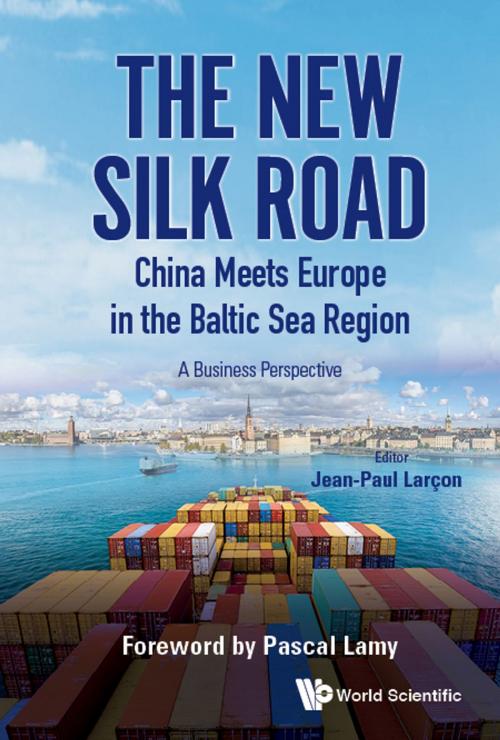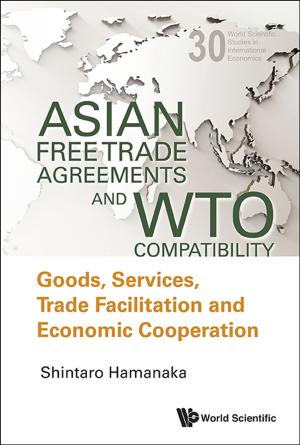The New Silk Road: China Meets Europe in the Baltic Sea Region
A Business Perspective
Business & Finance, Economics, International Economics, Nonfiction, Social & Cultural Studies, Political Science, International, International Relations| Author: | Jean-Paul Larçon | ISBN: | 9789813221826 |
| Publisher: | World Scientific Publishing Company | Publication: | May 24, 2017 |
| Imprint: | WSPC | Language: | English |
| Author: | Jean-Paul Larçon |
| ISBN: | 9789813221826 |
| Publisher: | World Scientific Publishing Company |
| Publication: | May 24, 2017 |
| Imprint: | WSPC |
| Language: | English |
The "Belt and Road" initiative announced by Chinese President Xi Jinping in 2013 aims at reviving the ancient trade routes connecting China to Europe and Africa: the "21st Century Maritime Silk Road" and the inland "Silk Road Economic Belt". Both maritime and land routes of the New Silk Road meet Europe in the Baltics — a region accounting for some 150 million inhabitants representing 30% of the total EU population. The maritime route enters Europe through the Mediterranean Sea before reaching the largest European seaports of the North Sea and the Baltic Sea up to Saint Petersburg in Russia. The land route starting from West China crosses Central Asia, Russia and Belarus before reaching the shores of the Baltic Sea.
This book focuses on the business and economic dimensions of China's initiative: Chinese government objective and policies, the strategies of Chinese and foreign firms along the Silk Road, trade and investment between China and Nordic-Baltic countries, the Eurasia Land Bridge corridors and logistics, the impact of the New Silk Road on the economies of Central Asia, new institutions financing the "Belt and Road", cross-cultural challenges and Sino-foreign joint ventures along the New Silk Road. The direct impact of China's initiative on economic sectors such as logistics services; the shipping, port management and maritime industry; construction and high-speed train; energy and engineering; and e-commerce, information technology and tourism will be assessed.
Readers will be provided with an in-depth analysis of the opportunities and challenges for companies and regions along the New Silk Road as well as 17 short case studies focusing on China-led projects currently developed along the "Belt and Road" and 15 maps of the New Silk Road, the Baltic Sea Region and Central Asia to help in understanding China's vision and strategic moves.
The "Belt and Road" initiative announced by Chinese President Xi Jinping in 2013 aims at reviving the ancient trade routes connecting China to Europe and Africa: the "21st Century Maritime Silk Road" and the inland "Silk Road Economic Belt". Both maritime and land routes of the New Silk Road meet Europe in the Baltics — a region accounting for some 150 million inhabitants representing 30% of the total EU population. The maritime route enters Europe through the Mediterranean Sea before reaching the largest European seaports of the North Sea and the Baltic Sea up to Saint Petersburg in Russia. The land route starting from West China crosses Central Asia, Russia and Belarus before reaching the shores of the Baltic Sea.
This book focuses on the business and economic dimensions of China's initiative: Chinese government objective and policies, the strategies of Chinese and foreign firms along the Silk Road, trade and investment between China and Nordic-Baltic countries, the Eurasia Land Bridge corridors and logistics, the impact of the New Silk Road on the economies of Central Asia, new institutions financing the "Belt and Road", cross-cultural challenges and Sino-foreign joint ventures along the New Silk Road. The direct impact of China's initiative on economic sectors such as logistics services; the shipping, port management and maritime industry; construction and high-speed train; energy and engineering; and e-commerce, information technology and tourism will be assessed.
Readers will be provided with an in-depth analysis of the opportunities and challenges for companies and regions along the New Silk Road as well as 17 short case studies focusing on China-led projects currently developed along the "Belt and Road" and 15 maps of the New Silk Road, the Baltic Sea Region and Central Asia to help in understanding China's vision and strategic moves.















